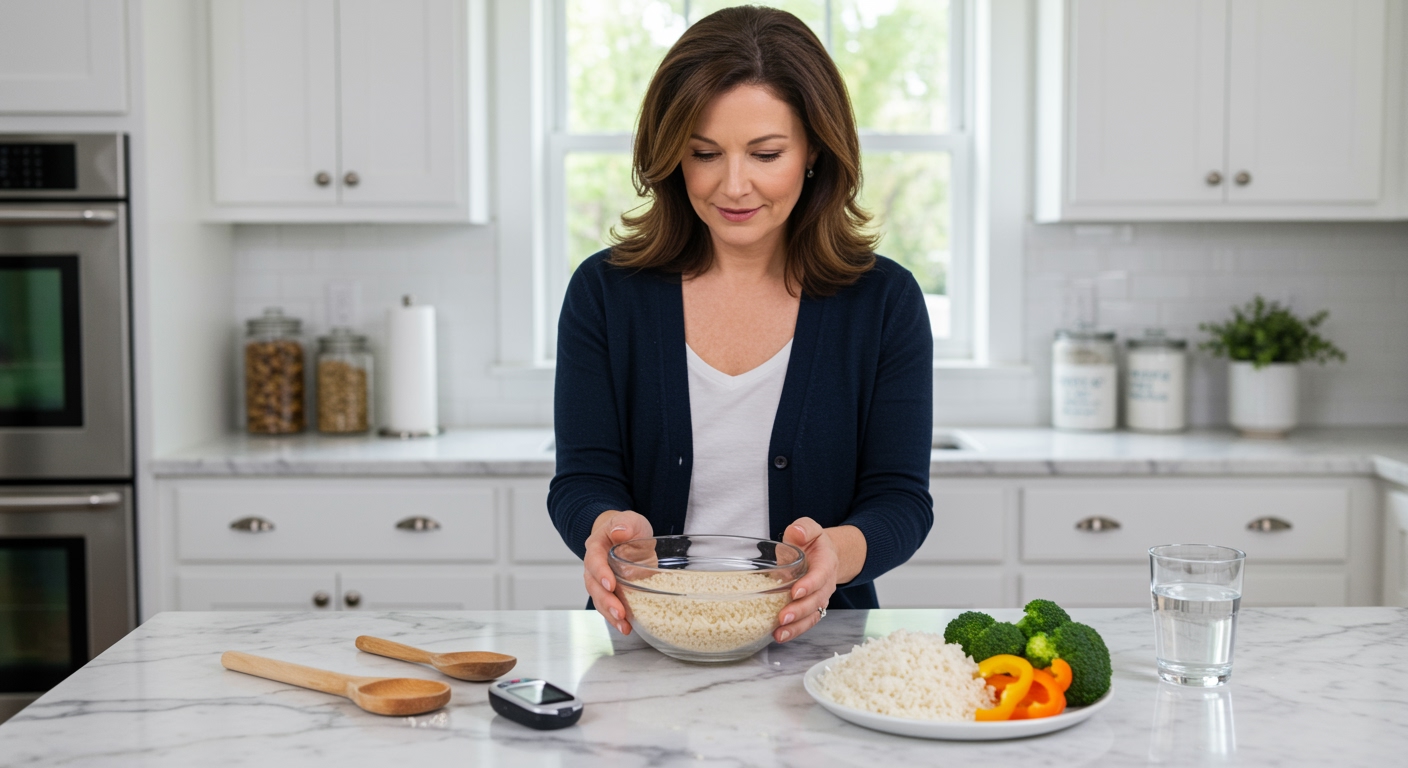✪ Key Takeaway: Parboiled rice has a moderate glycemic index and can be part of a diabetic diet when consumed in controlled portions.
Introduction
You walk down the rice aisle and see parboiled rice sitting next to white and brown rice.
You might be wondering if this golden-colored grain is safe for your blood sugar levels or if it will send your glucose readings through the roof.
Hi, I am Abdur, your nutrition coach and today I am going to explain exactly how parboiled rice affects diabetes and whether it deserves a place on your plate.
What Makes Parboiled Rice Different From Regular Rice?
Parboiled rice goes through a special steaming process before the hull gets removed.
This process pushes nutrients from the bran layer into the grain itself.
The steaming also changes the starch structure inside the rice grain.
This structural change affects how your body digests and absorbs the carbohydrates.
Regular white rice loses most of its nutrients during processing because the nutrient-rich bran gets stripped away.
Parboiled rice retains more vitamins and minerals because the steaming process moves these nutrients into the endosperm before processing.
✪ Fact: Parboiled rice contains 80% more nutrients than regular white rice due to the steaming process.
How Does Parboiled Rice Affect Blood Sugar Levels?
The glycemic index of parboiled rice ranges between 56 to 69, making it a moderate glycemic food.
This means it raises blood sugar levels more slowly than white rice but faster than brown rice.
The steaming process creates resistant starch in parboiled rice.
Resistant starch acts like fiber in your digestive system and slows down glucose absorption.
Your body takes more time and energy to break down the modified starch structure in parboiled rice.
This slower digestion helps prevent the sharp blood sugar spikes that regular white rice often causes.
Research shows that parboiled rice produces a lower postprandial glucose response compared to regular white rice in diabetic individuals.
✪ Pro Tip: Always measure your portion size to keep blood sugar responses predictable and manageable.
What Are The Nutritional Benefits For Diabetics?
Parboiled rice contains more B vitamins than regular white rice, especially thiamine and niacin.
These vitamins help your body convert carbohydrates into energy more efficiently.
The higher fiber content in parboiled rice supports better digestive health and glucose control.
Fiber slows down digestion and helps maintain steady blood sugar levels throughout the day.
Parboiled rice also provides more magnesium and potassium compared to regular white rice.
Magnesium plays a crucial role in insulin sensitivity and glucose metabolism in diabetic individuals.
The protein content is slightly higher in parboiled rice, which can help with satiety and blood sugar stability.
✪ Note: The nutrient density makes parboiled rice a better choice than regular white rice for diabetics.
How Should Diabetics Include Parboiled Rice In Their Diet?
Portion control remains the most important factor when eating parboiled rice with diabetes.
A serving size of one-third cup of cooked parboiled rice contains about 15 grams of carbohydrates.
Pair parboiled rice with protein sources like chicken, fish, or legumes to slow down glucose absorption.
Adding vegetables and healthy fats to your rice meal creates a more balanced nutritional profile.
Time your rice consumption with your medication schedule and physical activity levels.
Monitor your blood glucose levels before and after eating parboiled rice to understand your individual response.
Consider eating parboiled rice earlier in the day when your insulin sensitivity is typically higher.
✪ Pro Tip: Cook parboiled rice with extra water and drain it to reduce the starch content further.
What Are The Potential Drawbacks For Diabetics?
Parboiled rice still contains a significant amount of carbohydrates that can raise blood sugar levels.
Some diabetics may still experience blood glucose spikes depending on their individual insulin resistance levels.
The caloric density of parboiled rice can contribute to weight gain if portions are not controlled properly.
Weight management plays a crucial role in diabetes control and overall health outcomes.
Parboiled rice lacks the complete fiber profile found in whole grains like brown rice or quinoa.
The processing still removes some beneficial compounds that remain in completely unprocessed grains.
Individual responses to parboiled rice can vary significantly based on metabolic factors and medication regimens.
✪ Note: Always test your blood sugar response to determine if parboiled rice works for your specific situation.
The Bottom Line
Parboiled rice can be a reasonable choice for diabetics when consumed in appropriate portions and combined with other nutritious foods.
Smart food choices are not about perfection but about making better decisions within your individual circumstances.
I would love to hear about your experiences with parboiled rice or any questions you might have about managing diabetes through nutrition in the comments below.
References
At NutritionCrown, we use quality and credible sources to ensure our content is accurate and trustworthy. Below are the sources referenced in creating this article:





